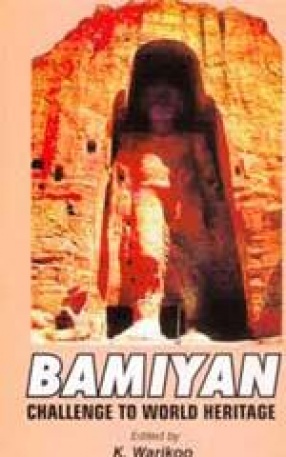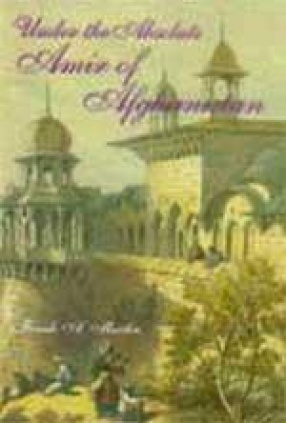
Bhavana Books & Prints

39 books

















The substance of the author travel and exploration in the 1850’s on the frontiers of Russia and China that included Siberia, the river Amur, and the Lakes Balkash and baikal: then known as the Krighis steppes. This was the time when Russia was extending its borders and trade and became a looming presence in Central Asia. In this journey of discovery, and wandering the author, a very astute and capable observer notes all that he saw and heard. He was also ...

Although the difficulties of travel in the mountain land are great, yet it must be said that long, tiring marches, unsafe bridges, dangerous fords, shocking roads, and precarious supplies, do not make travelling in Chitral as uncomfortable as might be expected. This is the personal experience of the author. As such, the book presents a live record of personal narrative of the author who not only gives an account of the geographical situation of Chitral and the ...

Ethnic conflicts have increased in number and intensity and have transcendented the realm of domestic and international politics. Till recently, these were not seen as international issues on account of traditional international legal norm of treating them as purely internal concern. But during the last two decades, ethnic conflicts have revealed a variety of cross-boundary international ramifications with crucial influence on foreign policy formulations. The ...

Divrse cultural influences-Persian, Hellinistic, Roman, Indian, Central Asian and Mongol have all contributed to the rich and variegated cultural heritage of Afghanistan. The destruction of ancient Bamiyan Buddha statues and historico-cultural heritage by the Taliban in Afghanistan caused irreversible loss to the heritage of the Afghan people and also to world heritage. It brought into focus and need for safeguarding world heritage and for promoting cultural ...

To travel across the mountains of Hindu Kush is an awe inspiring experience as these mountains were less known than the Himalayas even in the 1950s. Numerous difficulties coupled with troublesome path and steepy slopes, yet full of varied scenary often reminds one to experience the perpetual mystery of the Hindu Kush that stretches into the heart of Afghanistan. Unfortunately, the bulk of descriptive literature written on Afghanistan in the 19 century during the ...

Although by 1892, SS Thorburn had served for sixteen years in trans-Indus and for seven years in Indus districts west of Lahore, he had hardly any information of the neighbours. His discussions with friends in the Punjab Frontier Force were of little benefit because they were for military action. The author being a revenue official thought of the financial implications and other such eventualities. Hence, the book is an outcome of the author’s attempt of ...

Often termed as the gateway to India, Afghanistan under Amir Amanullah Khan remained one of the most important countries on the earth and with the possible exception of Turkey, seemed to be more powerful than any other Mohammadan state. Geographically, it was landlocked by Baluchistan to the south; Waziristan, the north west frontier province of India, Swat, Chitral and Kashmir to the east; Turkistan to the north; and Persia to the west. Lying right at the ...

With the emergence of two rival European powers—Tsarist Russia and Britain in Asia, Afghanistan turned into the centre-piece of the ‘Great Game’ played by the two powers during the nineteenth century. Both the powers desired to extend their influence upto Afghanistan and beyond in Central Asia without in any way getting involved into any direct clash between each other. In the mean time, the supposed Franco-Persian threat to India and Afghanistan led the ...

The historical curiosity attaching to the Afghans in terms of their origin, multitude and number of their tribes and clans, their transmigration to the mountainous region and conversion to Islam, remained quite unknown and unnoticed until the present work was made available during the British rule in India. It is the first Afghan history translated from an oriental language, and in compiling and writing this authoritative account, the author provides a full ...

An enquiry into the ethnology of the peoples now composing the population of Afghanistan is an important task for understanding the true meaning of Afghanistan and who the Afghans really are. So the identification of numerous existing tribes of Afghanistan as the modern representatives of Greeks who ruled the ancient nations of Ariana (modern Afghanistan) enables us to distinguish between the old possessors and the later settlers as well as between the remains of ...

Hungerford believes a great change had been effected in the late 19th Century, in the measure of information about regions of farther India in the North West. He claims that all that was known of the frontier geography was narrowed to a few lines running westward from India, and terminating in the cities of Afghan and Baluch highlands. The hills which faced us on our own border, onto which we could step from the plains, were still shrouded in mystery, and our ...

B Nalini The Global issue of ecological management is viewed from various angles at macro level. Such ecological problems could be tackled with relative ease if they are approached from micro level communities. Small territorial groups like tribes, who are part of the forest ecosystem, hold an important position in the preservation of the woodlands. The book describes the life style, culture habits and the health behaviour of the Kani tribes, the dwellers of ...

Throughout the nineteenth century, political developments in Afghanistan remained linked up with the Anglo-Russian rivalry. And the Amirs of Afghanistan tried to use this rivalry to their own benefit. Amir Sher Ali too followed this policy and in 1877 sent an envoy to ask for British aid against the encroachments by Russia. But the real object of this mission was to discover with which power the best bargain could be made. Unfortunately, the envoy could not ...

This travel account by a British Counsul-General, was written with a first-hand knowledge of the people, their art, folklore, and customs. Having posted at Kashgar in Chinese Turkistan during the 1920s, Sir Clarmont Skrine and his wife, both adventurous, and with insatiable quest for acquiring more information of this unexplored areas spent their time touring, exploring, and mapping the high mountains. This book has some superb photographs which show the ...

Captain Fred Burnaby, Royal Horse Guards, analyses the political and military happenings of the Central Asia during the mid 1800s. He evaluates the military strength of Russia, and says it could be outdone by Britain without anyone’s help. The book is an in-depth analysis of the political situations of Central Asia, and has been reissued after more than a century, of its original publication, as it was scarce for many years.

The author has given a popular account of the principal pioneering exploits in the region lying between the Caspian and India. In his writings on Central Asia, he tries to arbitrate impartially between Russia and England, Liberal and Conservative, Russophobe and Russophile. Some of the chapters originally appeared in a skeleton form in the columns of the Newcastle Weekly Chronicle, and the work was completed on his return from the Tsar’s ...

With the rise of two rival European powers Britain and Russia in Asia, Afghanistan became the focal point of Anglo-Russian rivalry in the 19th century. However, Amir Abdur Rahman tried to use this rivalry to his benefit and to consolidate his authority over the whole of Afghanistan. His son and successor Habibullah too followed a cautions policy of equidistance between Britain and Russia. He pursued the policies of friendly relations with the British in India, at ...

Arminius Vambery in early youth developed an interest in the languages of Europe and Asia, and later he got involved with the reciprocal relations of languages. He went to Constantinople, and his stay in Turkish houses and frequent visits to Islamic Schools transformed him into a Turk-an Efendi. He travelled further East, covering the whole of Central Asia. The book gives a description of the author’s journey from Teheran, to notices concerning ...

This book is the outcome of my own experience of the want of something of the kind in the early autumn of 1897, when the second battalion of my old corps, the Sherwood Foresters, Nottinghamshire and Derbyshire Regiment, then serving at Bareilly, was ordered to join the Tirah Expeditionary Force. The Battalion had then been in India for nearly fifteen years, but only one or two of the officers, and none of the other ranks, had ever been west of the Indus, and few ...

The Pamirs is a faithful first-hand daily record of an year’s expedition on horseback and foot through Kashmir, Ladakh, Western Tibet, Chinese Tartary, and the Pamirs undertaken by the author and his friend Major Roche and the author’s subsequent journey alone through Russian Central Asia to the Caspian Sea in 1892-93. Extremely interesting and very informative, the narrative makes you feel as if you have yourselves lived the events of the day during that ...

The Kashmir issue has always been in the news since independence. A number of good books have already been written dealing with different aspects of this issue. The present book attempts to focus on the constitutional aspects of this issue. The state has been enjoying a special status under Art. 370 of the constitution right from the beginning. The demand for greater autonomy has often been expressed through violent and non-violent means, in both official and ...

The book is relevant for the academicians, policy makers, planners, social workers and civil society alike, who are committed to the task of eradicating child abuse in India.

Art and Architecture of Uttaranchal is the first ever comprehensive study on the art and architectural legacy of the newly formed hill state of Uttaranchal. This mountainous state can proudly boast of being that part of the subcontinent wherefrom the Indian Civilisation developed and proliferated to the pan-Indian dimension. In fact, The Kedarkhand, the classical identity of this region, formed an integral part of the Aryavart or the Bharat. Since the first ...

A survey of the earth’s mainland, islands and seas reveals that the man by his endurance and thirst for knowledge has penetrated everywhere. The hottest deserts and coldest mountains too could not deter him reaching the target. In other words, an enthusiastic explorer does not mind facing even the most obstinate resistance to his advance. The polar regions both the North and the South, and their surroundings present a classic example of most difficult ...
